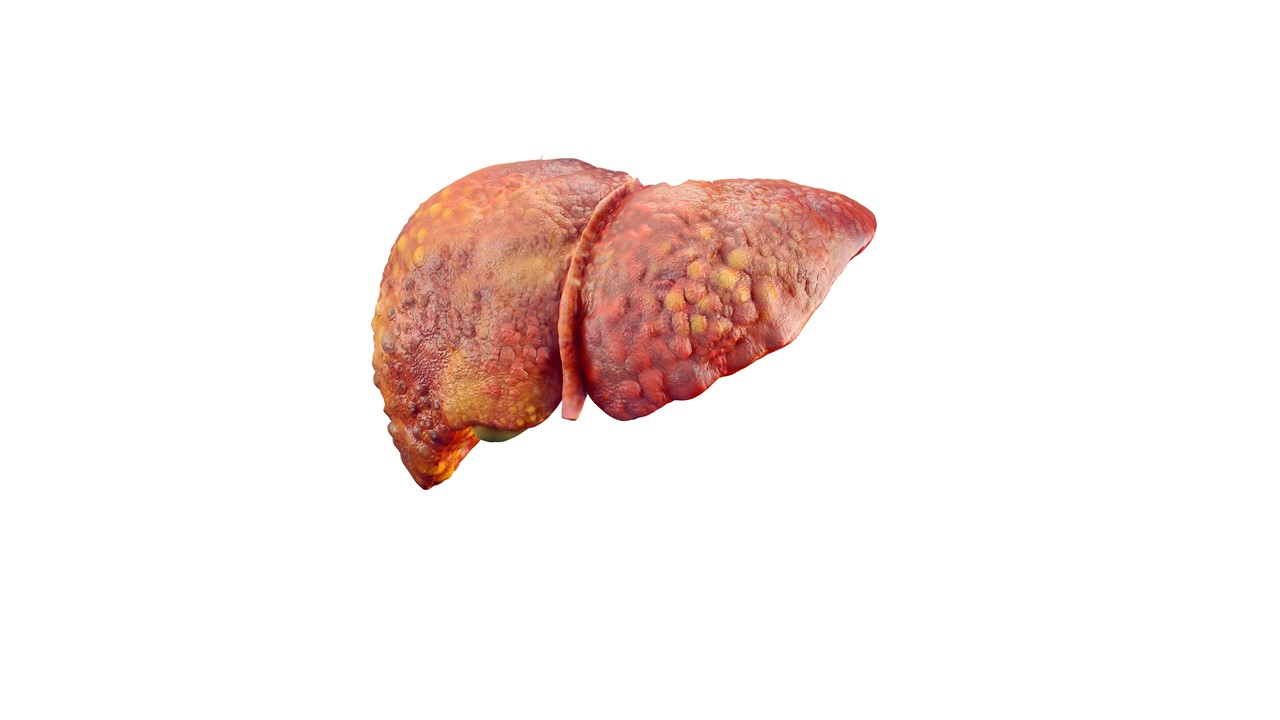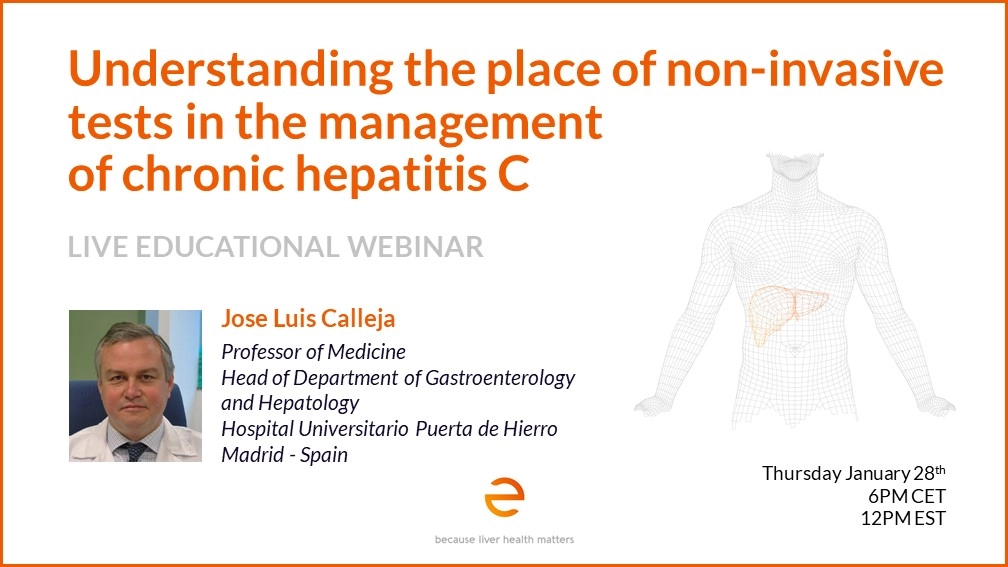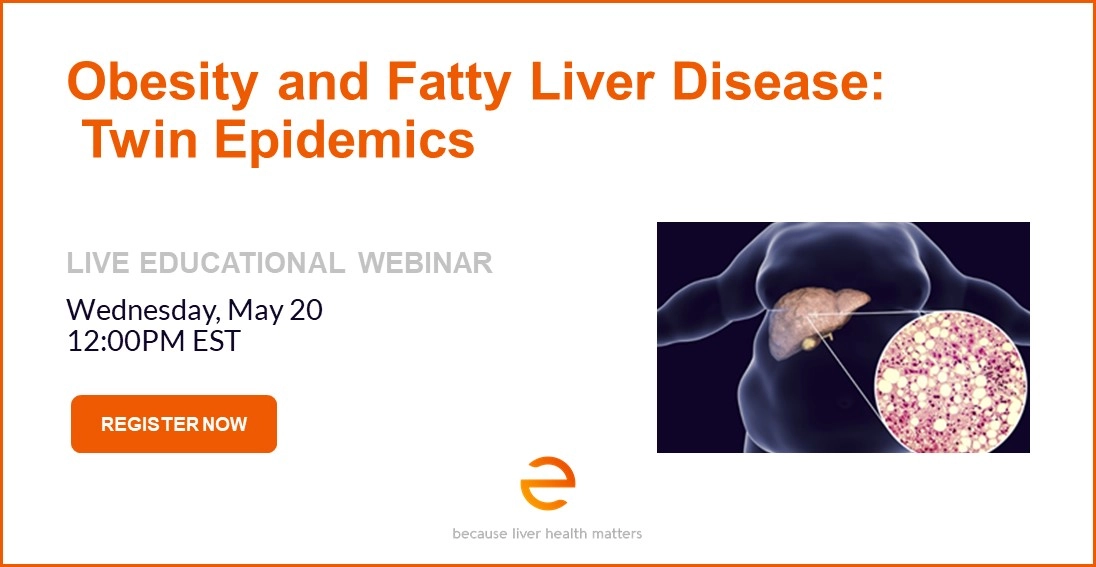The cure of chronic liver disease mainly concerns chronic hepatitis C, end of alcohol consumption and, to a very lesser extent, patients with a long-term control of viral replication of the hepatitis B virus during nucleosides or nucleotides analogs treatment.
Regarding chronic hepatitis C, a decrease of the incidence of HCC has been proven in several studies, firstly in patients treated with interferon and ribavirine2-3, and also among patients treated with new combinations containing direct antiviral agents.4
In sum, the yearly incidence of HCC is about of 1% after viral eradication vs 3 % before; the impact of the metabolic syndrom has been proven in the study of Nahon et al, with a 5-years cumulative incidence of HCC in patients after viral eradication at 3 % vs 8.8 %, without and with metabolic syndrome, respectively (p = 0,042).3
The appearance of oesophageal varices is reduced after sustained virological response (SVR) 5; however, SVR did not impact the aggravation of oesophageal varices already detected.
The use of Baveno VI conference criteria decreased the use of upper endoscopy (not useful in patients with platelets > 150 000/mm3 and elastography with Fibroscan < 20 kPa) 6, but these criteria are currently not validated after SVR.
For patients with initially, null to small oesophageal varices and no other liver disease, Jacobson et al have suggested to screen them again 2-3 years after SVR and then cessation of further endoscopic screening if no varices.7
The improvement of survival in cirrhotic patients after viral eradication has been proven after interferon-ribavirine therapy and more recently among patients treated with DAA, concerning non-liver-related and liver-related mortality (not only the HCC, but also, decompensation of cirrhosis and septic complications…).3, 8 The association of other liver diseases as alcohol consumption increases global mortality after SVR, in comparison with patients with SVR without other liver disease.9
In patients with chronic hepatitis B, the problem is different because hepatocellular carcinoma can occur before the stage of cirrhosis (explained by some mechanisms of carcinogenesis due to HBV DNA integration into the host genome), the very low percentage of complete viral eradication (HBs seroconversion, a non-optimal but the best current criteria, is rarely obtained), and the persistence of circularly closed covalent DNA in hepatocytes (explaining some viral reactivation in some circumstances).
However, a decrease of about 30 % of hepatocellular carcinoma in cirrhotic patients10 has been described in patients with a long-term control of viral eradication during a long-term treatment with nucleotides or nucleosides analogs.11
Some risk factors of hepatocellular carcinoma have been identified in these circumstances, as age, male sex, diabetes, HCV co-infection and the duration of treatment before obtaining viral suppression.11, 12 Some scores have been developed to individualize the follow-up, as the Page score (platelets, age, sex) allowing to distinguish several populations with different hepatocellular carcinoma risk.13
Data concerning others etiologies of cirrhosis are rare and these patients are also followed before specific treatment. However, some studies suggested that abstinence of alcohol reduced the hepatocellular carcinoma risk by 6-7% annually and an alcohol dose-dependent increase of its risk.14 On the other hand, lifestyle habits, as increase consumption of vegetables and higher physical activity, seem to be associated with a lower HCC risk in patients with non-alcoholic steatosis.15
In conclusion, systematic screening of complications of cirrhosis has to be continued despite the control of the cause of liver disease, since their incidence decrease but without disappearing.
Future studies are warranted to develop scores16 allowing to distinguish several sets of patients according the risk of hepatocellular carcinoma to individualize monitoring.
The other important part of the optimal follow-up of these patients remains the screening and the management of liver co-morbidities as metabolic syndrome and alcohol consumption, to decrease the incidence of cirrhosis complications.
REFERENCES:
- D’amico G, Morabito A, D’Amico M, Pasta L, Malizia G, Rebora P, et al. Clinical states of cirrhosis and competing risks. J Hepatol (2017), doi;https://doi/org/10.1016/j.jhep.2017.10.020.
- Van der Meer AJ, Feld JJ, Hofer H, Almasio PL, Calvaruso V, Fernandez-Rodriguez CM, et al. Risk of cirrhosis-related complications in patients with advanced fibrosis following hepatitis C virus eradication. J Hepatol 2017;66:485-493.
- Nahon P, Bourcier V, Layese R, Audureau E, Cagnot C, Marcellin P, et al. Eradication of Hepatitis C Virus Infection in Patients With Cirrhosis Reduces Risk of Liver and Non-Liver Complications. Gastroenterol 2017; 152:142-156.
- Kawal F, Kramer J, Asch SM, Chayanupatkul M, Cao Y, El-Serag HB. Risk of Hepatocellular Cancer in HCV Patients Treated With Direct-Acting Antiviral Agents. Gastroenterol 2017;153:996-1005.
- Di Marco V, Calvaruso V, Ferraro D, Bavetta MG, Cabibbo G, Conte E, et al. Effects of eradicating hepatitis C virus infection in patients with cirrhosis differ with stage of portal hypertension. Gastroenterology 2016; 151: 130-139.
- De Franchis R, Baveno IV faculty. Expanding consensus in portal hypertension:report of the Baveno VI Consensus Workshop: stratifying risk and individualizing care for portal hypertension. J Hepatol 2016;63:743-752.
- Jacobson IM, Lim KJ, Fried MW. American Gastroenterological Association Institute Clinical Pratice Update-Expert review: care of patients who have achieved a sustained virologic response after antiviral therapy for chronic hepatitis C infection. Gastroenterology 2017;152:1578-1587.
- The ANRS-AFEF Hepather group. First prospective evidence of decrease mortality after direct acting anti-virals in the French ANRS CO-22 Hepather Cohort. Hepatology 2017;66(S1): AASLD 2017:LB28.
- Innes H, McDonald S, Hayes P, et al. Mortality in hepatitsis C patients who achieve a sustained viral response compared to the general population. J Hepatol 2017;66:19-27.
- Kim WR, Loomba R, Berg T, Aguilar Schall RE, Yee LJ, Dinh PV, et al. Impact of long-term tenofovir disoproxil fumarate on incidence of hepatocellular carcinoma in patients with chronic hepatitis B. Cancer 2015;121:3631-3638.
- Hsu YC, Ho HJ, Lee TY, Huang YT, Wu MS, Lin JT, et al. Temporal trend and risk determinants of hepatocellular carcinoma in chronic hepatitis B patients on Entecavir or Tenofovir. J Viral Hepat 2017 Nov 28. doi: 10.1111/jvh.12832.
- Nam JY, Chang Y, Cho H, Kang SH, Cho YY, Cho EJ, et al. Delayed viral supression during antiviral therapy is associated with increased hepatocellular carcinoma rates in HBeAg-positive high viral load chronic hepatitis B. J Viral Hepatitis Dec 1. doi: 10.1111/jvh.12838.
- Riveiro-Barciela M, Tabernero D, Calleja JL, Lens S, Manzano ML, Rodriguez FG, et al. Effectiveness and safety of Entecavir or Tenofovir in a Spanish Cohort of Chronic Hepatitis B Patients : validation of the Page-B score to predict hepatocellular Carcinoma. Dig Dis Sci 2017; 62:784-793.
- Turati F, Galeone C, Rota M, Pelucchi C, Negri E, Bagnardi V, et al. Alcohol and liver cancer: a systematic review and meta-analysis of prospective studies. Ann Oncol 2014;25:1526-1535.
- Yang Y, Zhang D, Feng N, Chen G, Liu J, Chen G, et al. Increased intake of vegetables, but not fruit, reduces reisk for hepatocellular carcinoma : a meta-analysis. Gastroenterology 2014;147:1031-1042.
- Fujiwara N, Friedmann SL, Gossens N, Hoshida Y. Risk factors and prevention of hepatocellular carcinoma in the era of precison medicine. J Hepatol (2017), https://doi.org/10;1016/j/jhep.2017.09.016.


